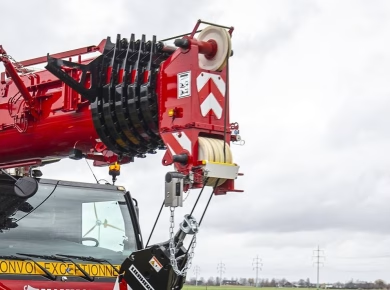The day started like any other on the construction site, with the hum of machinery and the chatter of workers setting the pace. Yet, lurking beneath that routine was a tension that seemed almost palpable, an undercurrent of risk that many of us brushed aside as we moved through our tasks. Lockout/Tagout (LOTO) procedures were in place, or so we thought. It was only when a colleague suffered a near-miss that the reality of our complacency hit home. That incident served as a stark reminder that in the world of safety, “good enough” is simply not enough.
The Cost of Complacency
Complacency in safety practices can lead to catastrophic failures. We often convince ourselves that the established protocols are sufficient, that we’re just too busy to stop and double-check if everything is in order. But let me tell you, one moment of oversight can change everything. During a routine maintenance task, a worker failed to properly lock out a piece of equipment. The result? A sudden activation nearly caused a serious injury. Luckily, the worker escaped with only a scare, but the incident prompted a thorough review of our safety practices.
Understanding Lockout/Tagout Basics
To comprehend the gravity of the situation, it’s essential to revisit the fundamentals of Lockout/Tagout. This safety procedure is designed to prevent the accidental energization of machinery during maintenance or servicing. It involves disabling equipment and placing a lock or tag on it to ensure that no one can operate it until the work is completed. The protocol seems straightforward, yet its implementation can become muddled in the face of daily pressures.
Every site manager knows the importance of training, but it’s often the execution that falters. Workers may have been trained, but if they are not consistently applying what they learned, the whole system can break down. Regular refresher courses are vital, and more importantly, we need to cultivate a culture of safety where everyone feels responsible for adhering to these protocols.
Real-Life Consequences of LOTO Failures
When I think back to that near-miss, I’m reminded of another incident that unfolded on a different site. A maintenance technician, confident in his experience, bypassed the LOTO procedures, believing he could complete the task faster without locking out the machinery. Unfortunately, a co-worker unknowingly activated the equipment, leading to a serious injury. The aftermath was devastating—not just for the injured worker but for the entire team.
We spent weeks in meetings, dissecting what went wrong. The incident was a harsh lesson about the dangers of cutting corners. It highlighted the necessity of adhering strictly to LOTO practices, regardless of how routine the task may seem.
Creating a Safety-First Culture
Shifting from a compliance-based mindset to a safety-first culture is paramount. This means encouraging open dialogue about safety without fear of reprisal. Workers should feel empowered to speak up if they notice shortcuts being taken or if they feel unsafe. Regular safety audits and anonymous feedback mechanisms can help identify areas for improvement before they lead to accidents.
Incorporating real-life stories into safety training can also bridge the gap between knowledge and behavior. Sharing firsthand accounts of near-misses or accidents can make the risks feel more tangible, reinforcing the importance of strict adherence to LOTO procedures.
Best Practices for Effective LOTO Implementation
To prevent lapses in safety protocols, it’s essential to establish best practices for implementing lockout/tagout procedures. Here are some actionable steps that can help:
1. Comprehensive Training
Ensure that all employees receive thorough training on LOTO procedures, not just once but regularly. Use a mix of theoretical and practical training to reinforce the importance of these practices.
2. Use Clear and Visible Tags
Tags should be easily visible and clearly indicate that the equipment is locked out. This reduces the risk of accidental activation and serves as a constant reminder for everyone on site.
3. Regular Audits and Inspections
Conduct regular audits of LOTO practices to ensure compliance. This includes checking that all equipment is properly tagged and locked out during maintenance.
4. Encourage Peer Accountability
Foster an environment where workers hold each other accountable for safety practices. If someone notices a potential lapse, they should feel comfortable addressing it with their peers.
Learning from Mistakes
Every incident, whether it results in an injury or not, is an opportunity for growth. That near-miss on our site led to a complete overhaul of our LOTO practices. We introduced new training modules, increased the frequency of safety audits, and made it a point to share stories of incidents, emphasizing lessons learned.
It’s easy to think of safety as a checkbox on a long list of tasks. However, the reality is that it should be woven into the very fabric of our workplace culture.
Documenting Incidents for Future Training
After every incident, documenting what happened and the subsequent changes made can serve as a powerful training tool. This not only helps current employees understand the risks but also provides valuable lessons for new hires.
Conclusion: Prioritize Safety Above All
The world of construction and maintenance is fraught with risks, and complacency in safety practices can have dire consequences. The journey toward a safety-first culture is ongoing, requiring commitment and vigilance from everyone involved. By learning from past mistakes and actively engaging in LOTO procedures, we can create a safer work environment for ourselves and our colleagues. Remember that safety is not just a procedure; it’s a mindset that we need to nurture every day. Let’s commit to being proactive, not reactive, in our approach to workplace safety. The lives we protect—our own and those of our colleagues—depend on it.


